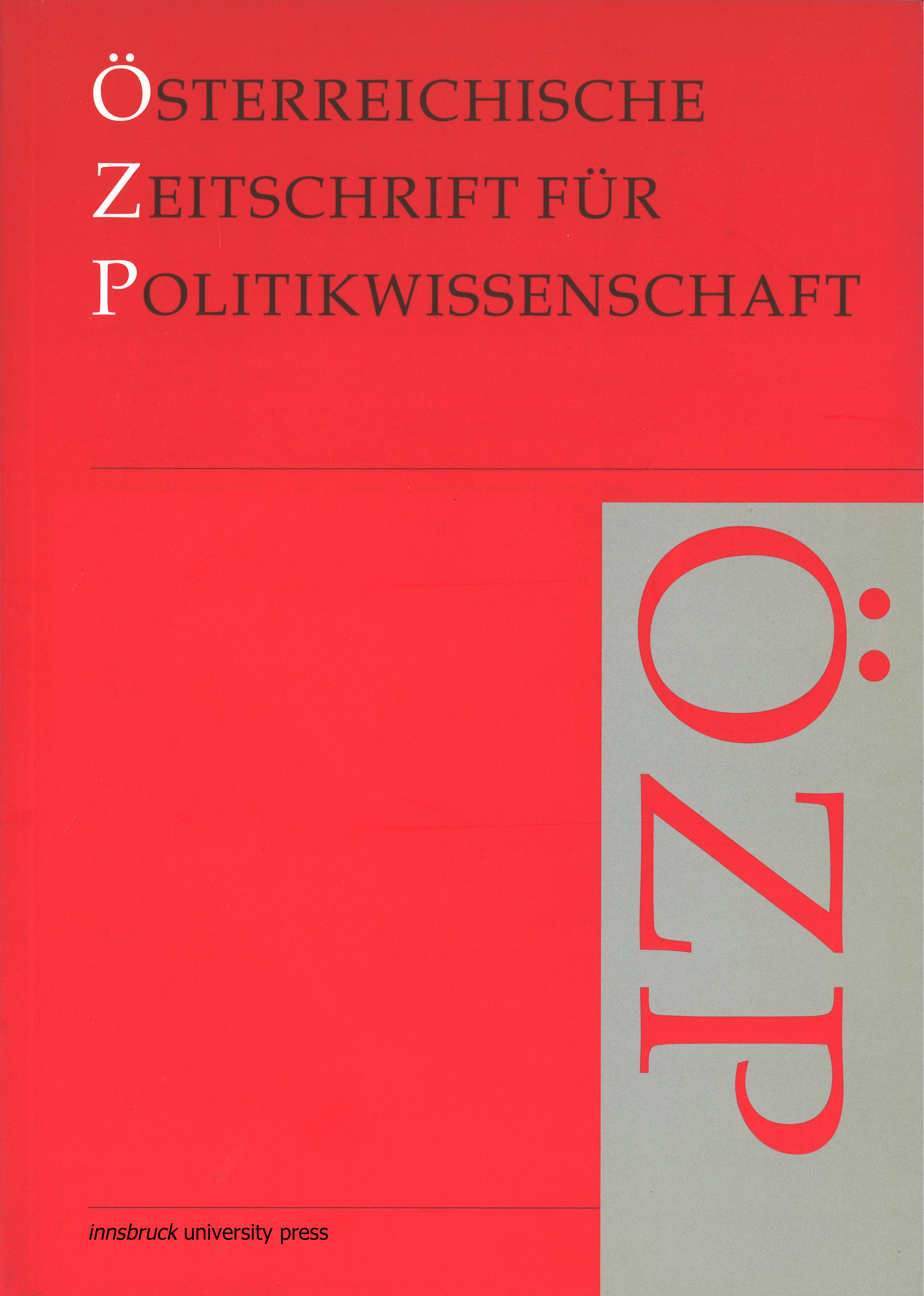Die „Regionale Partnerschaft“: Subregionale Zusammenarbeit in der Mitte Europas
DOI:
https://doi.org/10.15203/ozp.822.vol32iss1Abstract
Die AutorInnen deuten subregionale Zusammenarbeit als Kooperation zwischen benachbarten Staaten und legen Kriterien für ihre Beurteilung dar. Sie erläutern die Entwicklung der österreichischen Nachbarschaftspolitik und stellen die Diskussion über Mitteleuropa kurz dar. Österreich konzentrierte sich in der ersten Hälfte der 1990er Jahre auf den Beitritt zur EU, der 1995 erreicht wurde. In der Folge der Sanktionen der EU-14 schlug Außenministerin Ferrero-Waldner im Februar 2001 vor, dass Österreich, ohne wirkliche Partner in der EU, mit seinen Nachbarn und zukünftigen EUMitgliedern (einschließlich Polens) eine Interessengemeinschaft zentraleuropäischer Staaten bilden sollte, ähnlich Benelux oder der nordischen Kooperation; sie wurde schließlich Regionale Partnerschaft genannt. Die AutorInnen zeigen die eher positive Resonanz in Ungarn und die weitgehend skeptische Aufnahme der Initiative in Tschechien auf und stellen empirische Indikatoren (Außenhandel, Meinungsumfragen) für die Einschätzung der Zusammenarbeit dar. Mit regelmäßigen Treffen der AußenministerInnen und VertreterInnen verschiedener technischer Ministerien hat die Regionale Partnerschaft eine gewisse informelle Struktur entwickelt. Trotzdem erfüllt sie nur einen Teil der Kriterien für subregionale Zusammenarbeit.Downloads
Issue
Section
License
The OZP is the authorized quarterly publication of the Österreichische Gesellschaft für Politikwissenschaft (ÖGPW, Austrian Political Science Association)
The author of an article (in case of multiple authors: the corresponding author, responsible for releasing this material on behalf of any and all co-authors) accepted to be published in the OZP hereby acknowledges the following Copyright Notice:
- The author retains the copyright to the article.
- It is the responsibility of the author, not of the OZP, to obtain permission to use any previously published and/or copyrighted material.
- Publication of a submitted text is dependent on positive results from the peer reviewing. In such a case, the OZP editors have the right to publish the text.
- In case of publication, the article will be assigned a DOI (digital object identifier) number.
- The author agrees to abide by an open access Creative Commons Attribution (CC BY nc) license. The license permits any user to download, print out, extract, reuse, archive, and distribute the article in any non-commercial way, so long as appropriate credit is given to the author and source of the work.
- The license ensures that the author’s article will be available as widely as possible and that the article can be included in any scientific archive. In order to facilitate distribution, the author agrees that the article, once published, will be submitted to various abstracting, indexing and archiving services as selected by the OZP.
- In addition, the author is encouraged to self-archive the article, once published, with reference to the place of the first publication.
- After the contribution appears in the OZP, it is still possible to publish it elsewhere with reference to the place of the first publication.
- The finished article, if published, will include a correspondence address (both postal and email) of the author.
- If written under the auspices of a grant from one or more funding agencies, such as FWF (Austrian Science Fund), ERC (European Research Council), and Horizon 2020 (EU Framework Programme), an article accepted for publication has to be deposited in an Open Access archive. The OZP’s archiving policy is compliant with these provisions. (In case the article derives on funding from a different source, the author is responsible to check compliance of provisions.)




